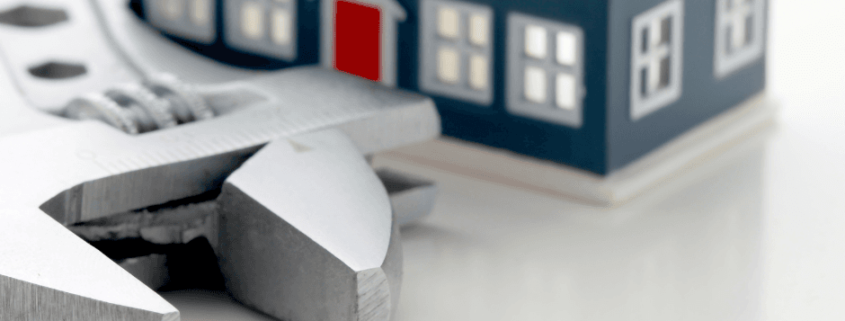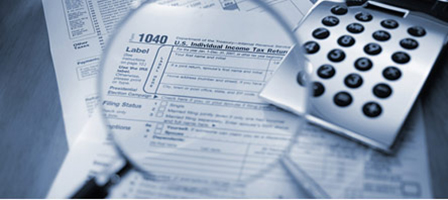Costs for Medically-Related Home Improvements Have Tax Benefits
- Learn about the aging US population.
- Find out what kinds of home improvements for medical care or treatment the IRS accepts.
- Discover which improvements may increase the home’s value.
- Learn about improvements that do not increase the home’s value.
- Learn about medical AGI limitations.
The US population is aging quickly. According to the Social Security Administration, 10,000 baby boomers a day are reaching the age of 65. As of 2018, 16% of Americans were age 65 or older, and by 2030 all boomers will be at least 65. As the population ages, many older individuals require medically-related home improvements.
The CDC has stated that falls are the leading cause of injuries among people age 65 and older. Nearly 30% of older adults reported falling at least once in the preceding 12 months. To help minimize falls, and to accommodate age-related infirmities, many people undertake home improvements such as adding grab bars in showers, modifying stairways, widening hallways to accommodate a wheelchair, and other projects to make the home safer and more accessible for older occupants.
Medically-related home improvements and taxes
Planning to make such home improvements? Then, you may be eligible to include the costs as a medical expense for income tax purposes.
Generally, taxpayers cannot deduct the costs of home improvements except to offset home gain during a sale. But a medical expense deduction may be claimed when the primary purpose of the modification is for a medical reason. The tax law says that deductible medical expenses are those paid for the “diagnosis, cure, mitigation, treatment, or prevention of disease, and the costs for treatments affecting any part or function of the body.”
So, if you are making the modification because you, your spouse, or a dependent has a medical need for doing so, then the modification expense may be deductible as a medical expense, but only to the extent that it exceeds any resulting increase in the property’s value.
Note: The IRS does not require a prescription from a doctor for most medically-related home modifications. However, the taxpayer, if questioned by the IRS, needs to demonstrate how the expenditure relates to his or her medical care or that of a spouse or dependent. And having a letter from the individual’s doctor that explains the type of modifications that would be medically beneficial would help to prove a medical need.

Example: How medically-related home improvements increase a home’s basis
A doctor recommends that his patient with severe arthritis have daily hydrotherapy. So, the individual has a hot tub installed at a cost of $21,000. The individual then hires a certified home appraiser to determine how much the hot tub addition increased the home’s value. The appraiser concludes the increase is $20,000.
The individual’s medical deduction for the year of installation will have a limit of $1,000 ($21,000 – $20,000). The other $20,000 of expenses will increase the home’s basis. This means that it will add to the home’s cost and will offset the sales price when the home is sold.
Deducting the full cost of medically-related home improvements
Not all improvements result in an increased home value. In fact, some, such as lowering cabinets for an occupant confined to a wheelchair, could actually decrease the home’s resale value.
The IRS has identified certain improvements that don’t usually increase a home’s value but for which the full cost can be included as a medical expense. These improvements include, but are not limited to, the following items:
- Constructing entrance or exit ramps for the home;
- Widening doorways at entrances or exits to the home;
- Widening or otherwise modifying hallways and interior doorways;
- Installing railings, support bars, or other modifications;
- Lowering or modifying kitchen cabinets and equipment;
- Moving or modifying electrical outlets and fixtures;
- Installing porch lifts and other forms of lifts (but generally not elevators);
- Modifying fire alarms, smoke detectors, and other warning systems;
- Modifying stairways;
- Adding handrails or grab bars anywhere (whether or not in bathrooms);
- Modifying hardware on doors;
- Modifying areas in front of the entrance and exit doorways; and
- Grading the ground to provide access to the residence.
Only reasonable costs to accommodate a home to a disabled condition or to an elderly individual are considered medical care costs. Additional costs for personal preferences, such as for architectural or aesthetic reasons, are not medical expenses (but could be additions to the home’s tax basis).
Limitations on medical expenses
Unfortunately, the total of all medical expenses can be deducted only to the extent that they exceed 7.5% of the taxpayer’s adjusted gross income (AGI) and only if the taxpayer itemizes deductions.
With the current high value of the standard deductions, the IRS expects fewer than 15% of taxpayers to itemize their deductions in the years through 2025. This is down from 30% prior to 2018 when the standard deduction amounts last changed.
So, even if a taxpayer makes a medically needed home improvement and qualifies for a deduction, only a small percentage of taxpayers will end up with a tax benefit as a result of the expenditure.
All is not lost, though. To the extent that the taxpayer doesn’t claim the expense as an itemized deduction, the improvement costs, including those that might not meet the medically necessary standard, can be added to the home’s purchase cost to determine the home’s tax basis. Thus, when the taxpayer sells the house, the capital gain from the sale will be lower.
Taxpayers should be sure to keep records of the home improvements they make, including the receipts for the costs. They may need them to either substantiate the currently deductible improvements or with a future home sale in mind.
Have questions related to this deduction and whether you will benefit, tax-wise, from any medically-related home modifications? Call Fiducial at 1-866-FIDUCIAL or make an appointment at one of our office locations to discuss your situation.
Ready to book an appointment now? Click here. Know someone who might need our services? We love referrals!
For more small business COVID-19 resources, visit Fiducial’s Coronavirus Update Center to find information on SBA loans, tax updates, the Paycheck Protection Program, paid sick and family leave.









